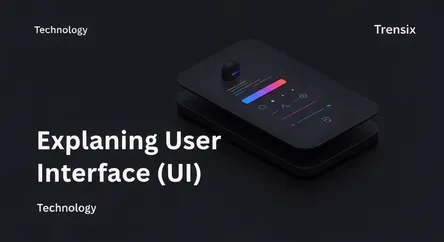Technology
Explaining User Interface (UI)

What is User Interface (UI)? Learn about the visual elements that allow you to interact with technology and why it's a critical aspect of modern gadgets.
What is it?
A User Interface (UI) is the visual point of interaction and communication between a human and a device, software, or application. It encompasses all the elements a user sees and interacts with, including screens, pages, buttons, icons, forms, and typography. Essentially, UI is the graphical layout that determines how a digital product looks and feels. Its primary goal is to make the user's interaction as simple, efficient, and intuitive as possible. Good UI design focuses on aesthetics and responsiveness, ensuring the user's journey through the product is visually pleasing and seamless.
Why is it trending?
UI is trending because our world is increasingly digital. With countless apps, websites, and smart devices competing for attention, a compelling and easy-to-use interface is no longer a luxury—it's a necessity for user retention and business success. As technology evolves with touchscreens, voice commands, and augmented reality, the field of UI design is constantly being redefined. Companies are investing heavily in skilled UI designers to create engaging experiences that stand out in a crowded market and build strong brand loyalty.
How does it affect people?
UI directly impacts daily life by shaping our interactions with technology. A well-designed interface makes complex tasks feel simple, boosting productivity and reducing frustration. It enhances accessibility, allowing people with varying abilities to use digital tools effectively. Think of a banking app that lets you transfer money in a few taps or a car's infotainment system that's easy to navigate while driving. Conversely, a poorly designed UI can lead to confusion, errors, and wasted time. It is the bridge between a powerful tool and the user's ability to harness its potential.